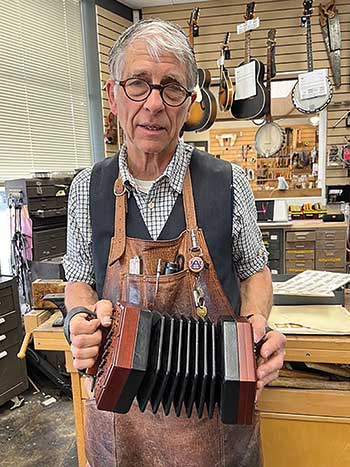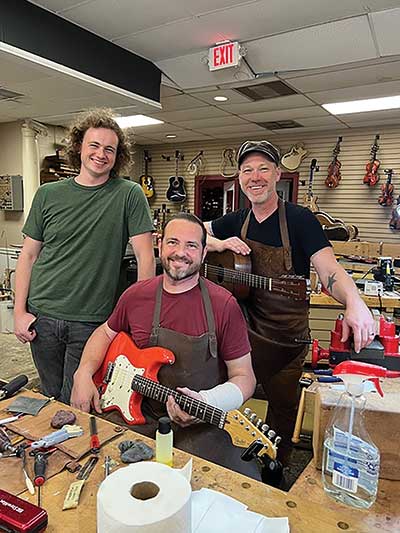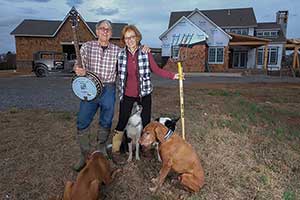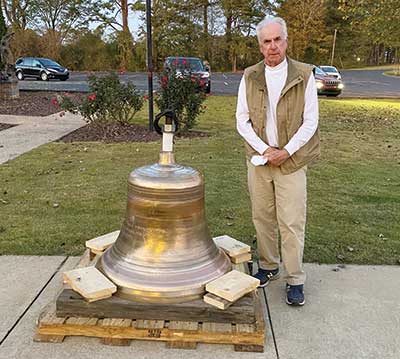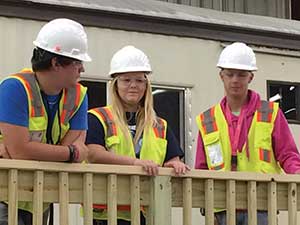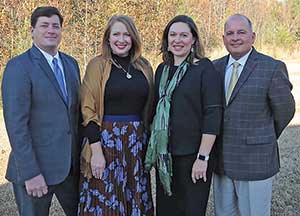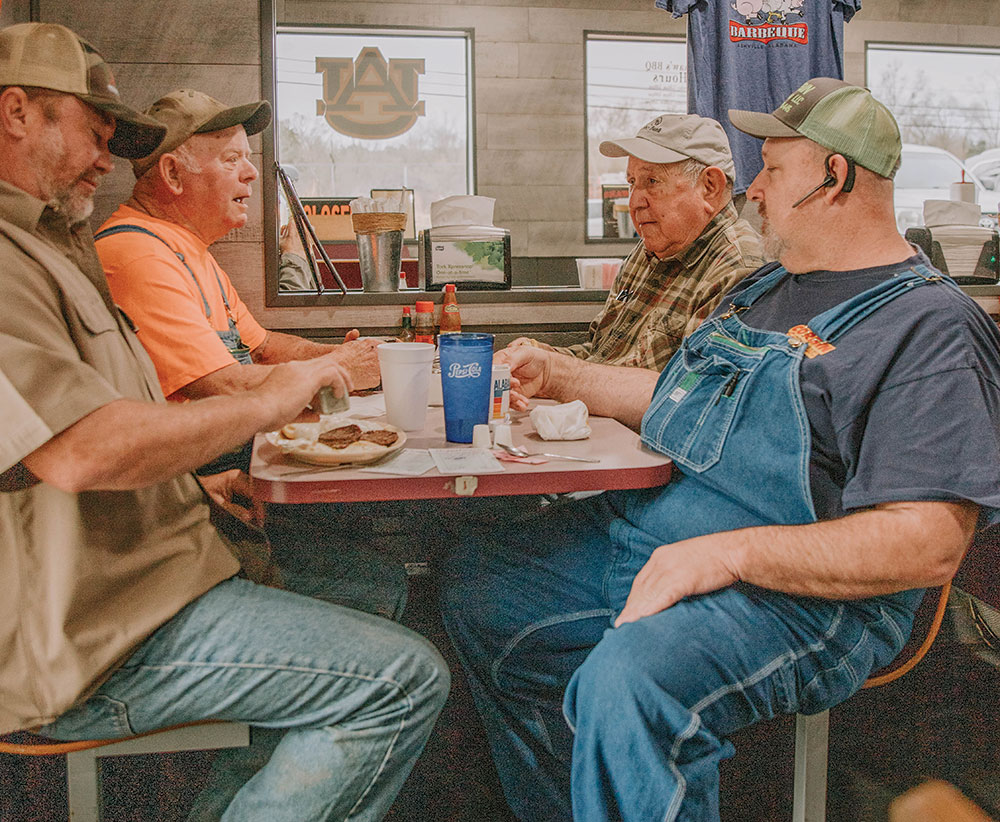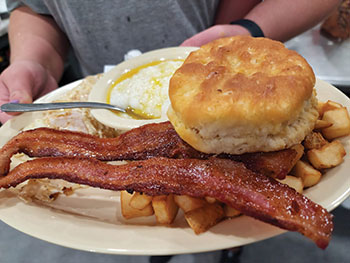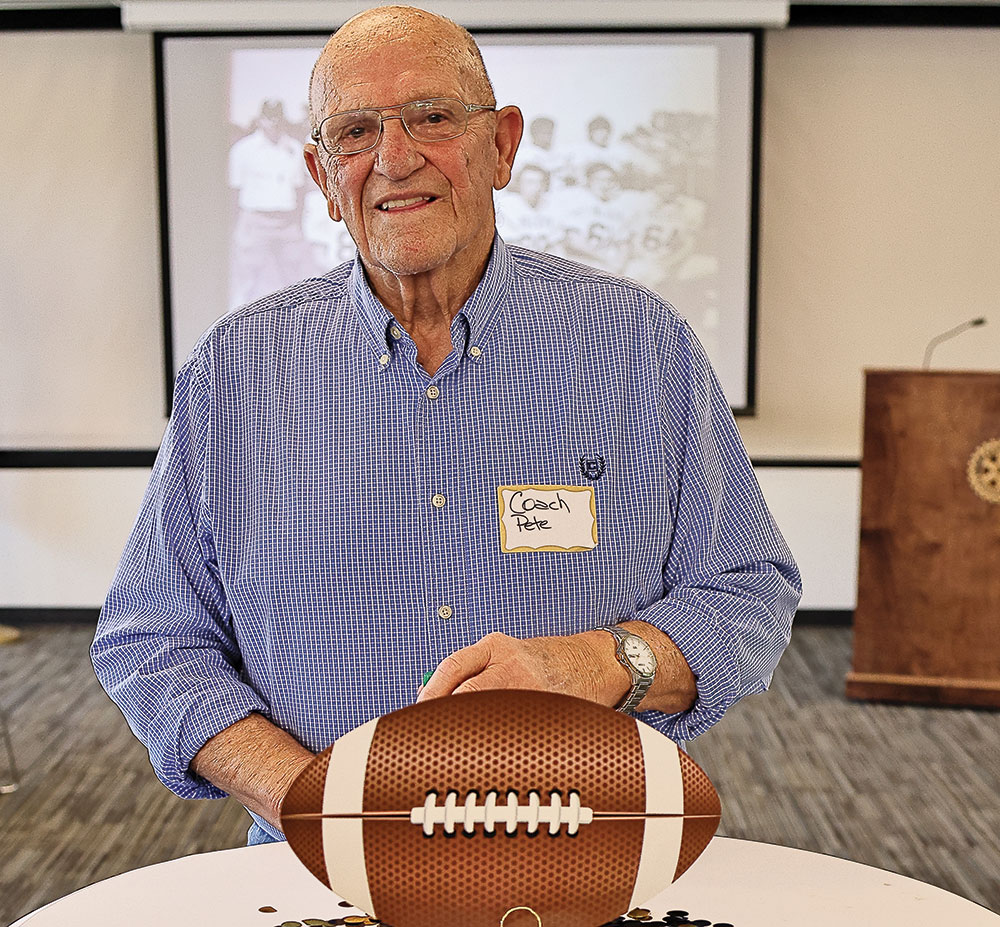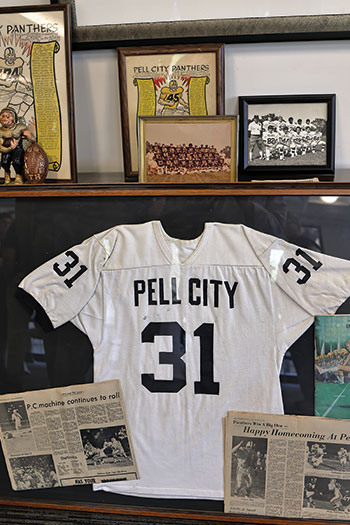Childhood fascination turns into lifetime skill for concertina maker
Story and photos by Elaine Hobson Miller
Bob Tedrow has been fascinated with concertinas since he was a child. He first saw them in cartoons, watching Geppetto the toymaker play one in “Pinocchio,” and Bashful in “Snow White and the Seven Dwarfs.” He sat up and took notice when Bob Hope played one while singing to Jane Russell in the movie “Paleface,” although he admits he may have been more attracted to Jane than the instrument.
“I had an absurd interest in the instrument as a child, but I didn’t complete my first concertina until the late 80s,” says Tedrow, a newcomer to the town of Ashville. “It was rather more of a concertina-shaped object, actually. It was quite a few years until I began to get the hang of building nice instruments.”
A concertina is a free-reed instrument that consists of expanding and contracting bellows with buttons usually on both ends. Free-reed, says the Merriam-Webster Dictionary, is “a reed in a musical instrument … that vibrates in an air opening just large enough to allow the reed to move freely.”
The body is built from seasoned hardwoods, and the bellows are made of vegetable-tanned goat leather and neutral-Ph cotton mat board. “The levers, springs, etc., are made of various metals suitable for the task,” Tedrow says. As for the cotton mat board, that’s just “a sexy word for cardboard, but nice cardboard.”
It’s a precursor to the accordion, invented in the 1820s in England and used today in England, Ireland and Scotland. “It has 60 steel reeds, although it can have 120,” Tedrow says. “Each reed is tuned to a different pitch, and the concertina is fully chromatic. By pressing one of those buttons and moving the bellows you allow the concertina to produce a specific note, hopefully musical.”
Tedrow, 70, has built about 75 concertinas since that first one, selling them in his Homewood Musical Instrument Company for 30 years and now on the internet, too. Somewhere along the way, he also became fascinated with repairing stringed instruments, the area in which his shop specializes.
“My fascination is with the mechanics of an instrument,” he says. “I like fooling with the parts. I’m attracted to their nuts and bolts, with the process of building or repairing. The process never ends, either, because there’s always another one to be repaired.”
Homewood Music has been a fixture in that Birmingham suburb for 30 years. For the first 25, it was across the street from Homewood Park on Central Avenue but moved a bit closer to the heart of downtown Homewood on 28th Avenue South about five years ago. The shop buys, sells, repairs and restores stringed instruments – and a few concertinas. Tedrow has customers as far away as Japan due to his internet presence. “There are almost no shops like this anymore,” he says. “We’re a throwback to the early 1900s.”
“Luthier” is the formal name for what Tedrow and each crew member does. It’s hard to find luthiers like his three employees, who play and fix instruments. “I was working alone when Jason (Burns) wandered in more than 20 years ago,” he says. “He’s far better than me at repairing. Michael (Clayton), who has been with me for six years, has a sum of knowledge I can call on. Matthew (Williams) is the new boy, he has only been with me a few years.”
Tedrow is from a small town in Colorado and moved to Homewood in 1987 because his wife, Klari, wanted to go to law school. “I did not marry a lawyer, I raised one,” he says. Klari, who is quite adept at playing a concertina Tedrow built for her, is now an immigration attorney. “We bought 60 acres in Ashville about two years ago, and we’re building a house there next to the small cabin we live in.”
Homewood was a great place to raise their three kids, who are upset because “we sold their house.” But he and Klari needed some space for their four dogs, which she runs through A.K.C. agility trials.
A real estate agent showed them several places, but they found their Ashville paradise on their own. “We bought directly from Derrick and Amy Heckman,” he says. “The property never even went on the market.”
When he lived in Homewood, Tedrow drove a 1928 Model A Ford back and forth to work. He occasionally drives it around Ashville now. “I have taken it to the town square a couple of times, where it marks its territory with several drops of leaked motor oil,” he says. “I also drive it to our mailbox at end of the road.”
His musical talent probably came from his grandmother and mother. The former was a “real good jazz piano player,” and his mother played guitar, mandolin and other stringed instruments. “Grandmom taught me to play the ukulele,” Tedrow says. He picked up other instruments on his own. “If we define ‘play’ generously, I play the guitar, banjo, bass, ukulele, mandolin, clarinet, saxophone and concertina,” says Tedrow. “I’m trying to learn the tambourine.”
While he played lots of bluegrass banjo in the 70s in Colorado, now he just plays a bit in the shop with visitors and customers. “I also play Irish tunes with my wife and a few close friends,” he says.
When he moved to Homewood, he went to a pawn shop in downtown Birmingham and told them he wanted to repair their instruments. “Sometimes people pawn instruments that need repair or restoration,” he explains. He opened a tiny shop across the street from the park. Then he walked into the office of the superintendent of music education for Birmingham city schools, Dr. Frank Adams, and got the job of repairing their stringed instruments. Later, he started repairing instruments for the education division of the Alabama Symphony Orchestra. Eventually, he had to expand his shop.
Despite his early musical training, he originally wanted to be a forest ranger. He met his wife at Colorado State, where both were in the forestry school. “I played in a bluegrass band with her brother,” Tedrow says. “We soon discovered there weren’t many jobs in forestry, and none in banjo playing. Occupational therapists were in great need, however, so I went back to school and got a degree in that field.” He worked as an OT in Colorado and North Carolina before coming to Birmingham. Although licensed as an OT in Alabama, he has yet to practice here. “I found that I was far more valuable to the state with a banjo,” he says.
For several years, he played Mr. Mom while Klari was in Cumberland School of Law. At the same time, he was doing repairs for those pawn shops, the City of Birmingham and the ASO. He continued to accumulate skills and tools. “I’m entirely self-taught, which just means I did things wrong for a long time,” he says.
At some point he decided to concentrate on one thing he could do as well as anybody. The concertina was an orphan instrument, meaning few people in the USA played one, as far as he was aware. “I never met anyone who did for many years, not in Alabama, anyway,” he says. “So, I bought one and took it apart. The first one I built I made the bellows section from a pair of my daughter’s discarded leather pants. In fact, I sat in church one day, having developed that concentrated stare where it looks like you’re listening, but your mind is far away. I figured it out that day: The bellows are like origami.”
It takes a long time to learn repairing well enough to make money at it, to be good and fast, Tedrow says. “Restoring vintage instruments is an entire other field than putting strings on a guitar,” he says. “It’s an art. You want it to look like the original, without devaluing it.”
When someone points out that what he does could be considered a play on the words, “occupational therapy,” he agrees. “I use the skills I learned as an OT when I teach guitar, banjo, ukulele, etc. I try to analyze how each student will best learn. Some learn best with their auditory skills, some students are cognitively oriented while others learn best with a physical approach.”
Sometimes he or his staff will find a secret note in a vintage instrument they are repairing, a note left by the builder while the instrument was under construction. For example, “I’m sorry,” was carved into a “Mossman” dreadnought guitar from a luthier in Kansas in the 1980s. “The builder knew that one day in the far distant future a luthier like our Jason Burns would have a tricky job repairing this guitar,” Tedrow says. “He was apologizing in advance from 40 years ago. It was a note through time. Very clever and thoughtful.” A vintage violin contained a note in Latin that translated to, “In life I was silent, in death I sing.” Tedrow says that was the wood speaking.
In the windows of his shop, facing both inward and outward, are photos of artists and their instruments, ordinary people, some of them customers, most of the photos taken by Tedrow for publicity purposes.
He has a designated photo spot with several backdrops, special lighting and props. Photography is a hobby, he says. Facing outward in the windows are a couple of vintage photos of musicians from the towns he has lived in. “I like to think they are remembered,” he says.
Inside, violins, mandolins, banjos, ukuleles and guitars, acoustic and amplified, hang from the walls of his shop. Some are awaiting repairs, others for their owners to claim them. A glass display case shows off concertinas made and repaired by Tedrow. Tools such as lathes, saws and sanders give the appearance of a carpentry shop, and in a way, it is, because they usually have to make the broken parts they are replacing.
“My favorite job is working on vintage guitars,” says Jason Burns, 45, who started learning his craft as a teenager working on his own guitars. “Of course, I have learned a ton over the years from Bob and other luthiers.” He plays the guitar, ukulele, banjo and the upright bass.
He calculates that over the last 22 years, he and Tedrow have spent 46,000 hours together, and Burns cannot imagine what life would be like without his boss and friend. “He’s a wealth of knowledge about way more than musical instruments,” he says of Tedrow. “He’s the guy who showed me how to become a better person, how to stay married and even how to tie a tie. The list could go on and on. The world needs more people like him.”
Matthew Williams, 26, got into “all of this” because he couldn’t afford the guitars he wanted. “So, I thought with my woodworking background, I could just build them,” he says. “It turns out that’s easier said than done.”
He says he “annoyed himself into a job” by buying “project” guitars, going into Homewood Music and getting Tedrow, Burns and Clayton to tell him how to fix them. “I did this for years, and after they got fed up answering my questions, I asked them for a job. After two years they finally relented, and I started coming in a few days a week and learning how to repair guitars on the job. It is without a doubt the best job I’ve ever had, and I look forward to seeing everyone each week.
Michael Clayton, 48, is a nurse by trade who started working on his own guitars about seven years ago after a bad repair experience at a different store. He watched videos from famous luthiers and followed all of Jason Burns’ repairs on Instagram.
“I happened to meet Jason about six years ago because, as fate would have it, our kids ended up on the same soccer team,” he says. “We became friends, and he invited me to the shop on my days off. I came down to watch him work and to learn from him, and that’s when I met Bob.”
He began working there “little by little,” he says, until he ended up “sort of” in an apprenticeship. “I’ve worked there for six years now and in that time, Bob and Jason have become my dearest friends.”
He describes Tedrow as “a bit of a force of nature,” adding that he’s also kind, intelligent and plays almost everything with strings. “Whenever someone comes in, he immediately greets them and everyone, I mean everyone, gets what we call the ‘Bob Show,’” Clayton says. “He’s one of the most engaging and charismatic people I’ve met. I have learned a great deal about luthiery and also life while spending time with the both of them (Bob and Jason). In short, they broke the mold.”















